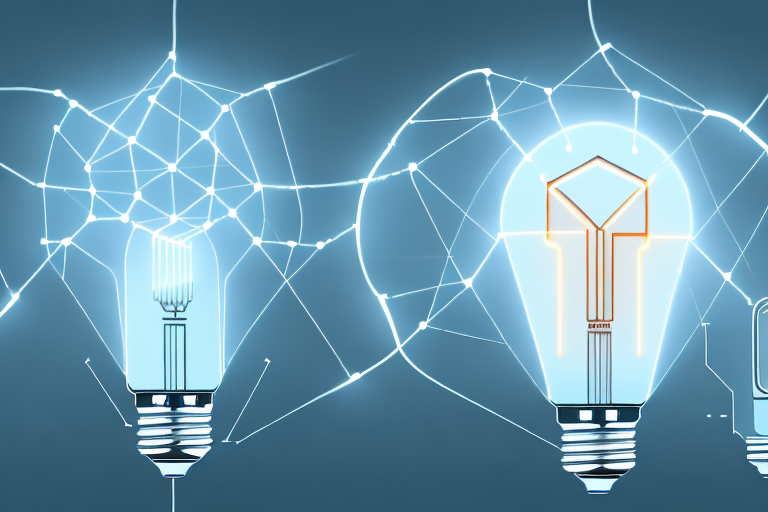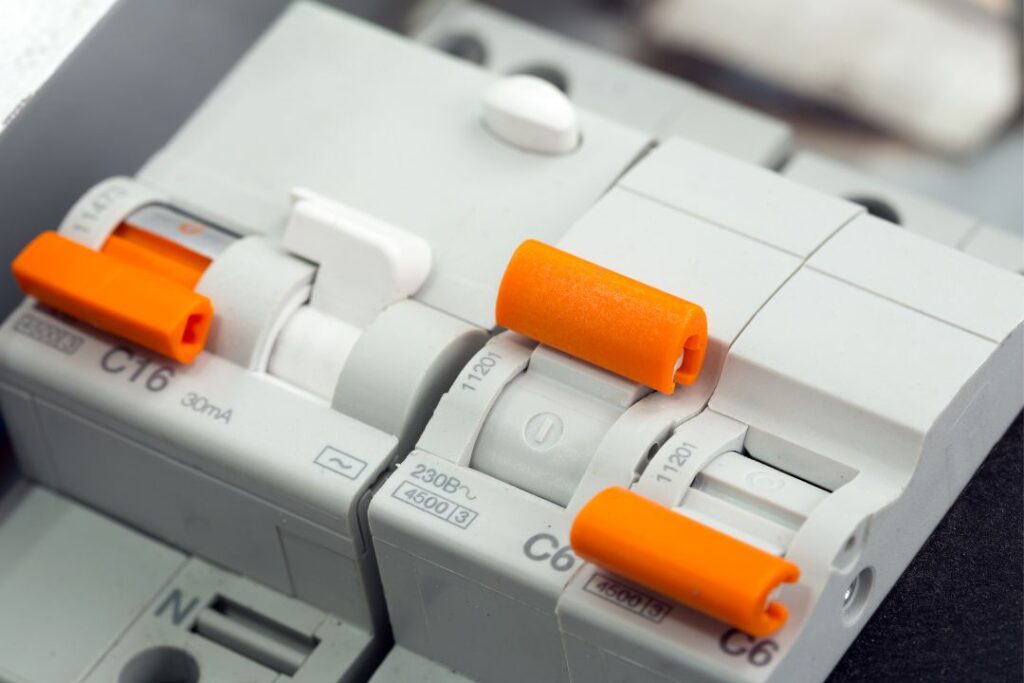Lighting the Way: Exploring the Latest Innovations in Electrical Supplies
In today’s fast-paced world, it’s easy to take electrical supplies for granted. We flick a switch, and the room illuminates. We plug in our devices, and they charge with ease. But have you ever stopped to consider the fascinating evolution and cutting-edge advancements of electrical supplies? From humble beginnings to the incredible innovations of today, let’s delve into the world of electrical supplies and explore the latest breakthroughs that are lighting the way to a brighter future.
Understanding the Evolution of Electrical Supplies
Before we can appreciate the latest innovations, it’s essential to understand how electrical supplies have evolved. From simple candles to the advent of energy-efficient LED lights and light switch, the journey has been nothing short of remarkable.
From Candles to LED: A Brief History
In ancient times, primitive civilizations relied on candles and oil lamps to light their surroundings. These sources of light were limited in brightness and duration, often posing safety hazards. However, as technology progressed, the invention of the incandescent light bulb by Thomas Edison revolutionized the way we illuminate our world.
With the introduction of the incandescent light bulb, people could enjoy brighter and longer-lasting illumination. This breakthrough sparked a wave of innovation, leading to the development of various lighting fixtures and electrical systems that made lighting more accessible and convenient for everyone.
Today, we stand on the brink of a new era with the rise of LED (Light-Emitting Diode) lighting. These small semiconductor devices emit light when an electrical current passes through them, producing a highly efficient and durable source of illumination. LED lights consume significantly less energy than traditional incandescent bulbs and last much longer, reducing waste and saving both money and resources.
LED technology has not only transformed the way we light our homes and workplaces but has also revolutionized other industries. From automotive lighting to outdoor displays, LED technology has become a versatile and widely adopted solution for various lighting needs.
The Role of Technology in Electrical Supply Advancements
Technological advancements have been key drivers in revolutionizing electrical supplies. From the early days of Edison’s invention to the present day, ongoing research and development have paved the way for remarkable breakthroughs. By visiting https://johninnes.info/reasons-why-you-need-a-brisbane-buyers-agent-to-do-your-home-search/ you can read about Reasons why you need a Brisbane buyers agent to do your home search.

Today, advanced electrical supplies incorporate technology such as sensors, automation, and wireless connectivity to enhance efficiency and convenience. Smart homes, for example, utilize interconnected electrical systems that can be controlled remotely through mobile devices or voice assistants. These systems offer unparalleled flexibility, enabling homeowners to customize their lighting and energy usage to suit their needs and preferences.
Furthermore, the integration of renewable energy sources, such as solar panels and wind turbines, with electrical supplies has opened up new possibilities for sustainable power generation. These green energy solutions not only reduce reliance on traditional fossil fuels but also contribute to a cleaner and greener future.
Looking ahead, the evolution of electrical supplies shows no signs of slowing down. Researchers and engineers continue to explore innovative materials, energy storage solutions, and advanced control systems to further improve the efficiency, reliability, and sustainability of electrical supplies.
The Rise of Energy-Efficient Electrical Supplies
As global environmental concerns become more pressing, the demand for energy-efficient electrical supplies is at an all-time high. Not only do these innovations reduce our carbon footprint, but they also provide significant cost savings over time.
The Importance of Energy Efficiency
Energy efficiency has become a critical consideration in today’s world. With the rising cost of electricity and the urgent need to combat climate change, energy-efficient electrical supplies offer a sustainable solution for both individuals and businesses alike.
By minimizing energy wastage and maximizing performance, energy-efficient lighting and appliances not only lower electricity bills but also contribute to conserving our planet’s resources. Modern electrical supplies are designed to be more eco-friendly, using less energy without sacrificing functionality or quality.
Innovations in Energy-Efficient Lighting
One of the most significant advancements in energy-efficient electrical supplies is the development of LED lighting technology. LED lights are up to 80% more energy-efficient than conventional incandescent bulbs, making them the preferred choice for environmentally conscious individuals and organizations.
Beyond their exceptional energy efficiency, LED lights offer a range of additional benefits. They have a longer lifespan, reducing the frequency of bulb replacements and thereby minimizing waste. LED lights also emit less heat, making them safer to use and reducing the strain on cooling systems in commercial buildings. You can also read about Australian electricity options: nuclear by clicking here.
Another exciting innovation in energy-efficient lighting is the use of smart lighting systems. These systems utilize advanced sensors and controls to optimize lighting levels based on occupancy and natural light availability. By automatically adjusting the brightness and turning off lights when not needed, smart lighting systems can further reduce energy consumption.

Furthermore, energy-efficient electrical supplies extend beyond just lighting. Appliances such as refrigerators, air conditioners, and washing machines have also undergone significant improvements in energy efficiency. For example, modern refrigerators are equipped with advanced insulation and compressor technologies, resulting in reduced energy consumption while maintaining optimal cooling performance.
Moreover, the development of renewable energy sources has further enhanced the energy efficiency of electrical supplies. Solar panels, for instance, convert sunlight into electricity, providing a clean and sustainable source of power. When combined with energy-efficient electrical supplies, solar panels can significantly reduce reliance on traditional energy sources and lower carbon emissions.
The Impact of Smart Technology on Electrical Supplies
In the age of artificial intelligence and IoT (Internet of Things), electrical supplies have seamlessly integrated with smart technology to create a truly interconnected and intelligent environment.
The Integration of AI in Lighting Systems
Artificial intelligence algorithms are revolutionizing the capabilities of lighting systems. By analyzing data from various sensors, AI-powered lighting can adjust brightness levels according to occupancy patterns, time of day, or even individual preferences. This level of customization creates not only a personalized experience but also potential energy savings.
Imagine walking into a room, and the lighting automatically adjusts to your preferred brightness and color temperature. With AI-driven lighting systems, this is no longer a dream but a reality that offers both convenience and energy efficiency.
The Future of Smart Lighting
The potential for smart lighting systems goes far beyond personalization. As technology continues to evolve, we can expect smart lighting to play a significant role in creating safe and sustainable cities. Intelligent street lighting, for example, can dynamically adjust brightness levels based on real-time data, resulting in enhanced visibility, reduced energy consumption, and improved safety.
Moreover, smart lighting systems can also contribute to the overall well-being of individuals. Research has shown that lighting has a profound impact on human health and productivity. With the integration of smart technology, lighting systems can now mimic natural light patterns, promoting better sleep, increased alertness, and improved mood.
Furthermore, smart lighting can be combined with other smart devices to create a truly connected ecosystem. Imagine a scenario where your lighting system is synchronized with your smart thermostat and security system. As you enter your home, the lights turn on, the temperature adjusts to your preferred setting, and the security system disarms itself. This level of automation not only enhances convenience but also provides a sense of security and peace of mind.
Safety Innovations in Electrical Supplies
Alongside advancements in energy efficiency and smart technology, electrical supplies have also seen remarkable progress in terms of safety measures.
Advances in Electrical Safety Measures
Electrical safety is of paramount importance to protect both individuals and property. With increasing awareness of potential hazards, electrical supplies have undergone significant improvements to enhance safety.
Modern electrical supplies incorporate features such as ground fault circuit interrupters (GFCIs) and arc fault circuit interrupters (AFCIs) that detect and prevent electrical faults, reducing the risk of fires and electrocution. These innovative devices are designed to swiftly interrupt the flow of electricity when a fault is detected, effectively preventing potential accidents.
Furthermore, advancements in insulation materials have contributed to the overall safety of electrical systems. Insulation materials with higher resistance to heat and moisture ensure that electrical wires and components are better protected, minimizing the risk of electrical malfunctions and potential hazards.
The Role of Regulations in Electrical Safety
Regulatory bodies play a crucial role in ensuring the safety and reliability of electrical supplies. Through the implementation of industry standards and rigorous testing procedures, regulatory bodies enforce guidelines that manufacturers must adhere to in order to meet safety requirements.
These regulations cover various aspects of electrical supplies, including design, manufacturing, installation, and maintenance. They set forth specific requirements that manufacturers must meet to ensure the safety and performance of their products. By complying with these regulations, electrical supply manufacturers help safeguard consumers and maintain the integrity of the industry.
Moreover, these regulations also foster innovation as manufacturers continuously strive to develop products that meet the highest safety standards. The stringent requirements set by regulatory bodies push manufacturers to explore new technologies and materials, leading to the development of safer and more reliable electrical supplies.
In conclusion, the advancements in electrical safety measures and the role of regulations have significantly contributed to the overall improvement of electrical supplies. With the integration of innovative safety features and adherence to strict guidelines, electrical supplies today are safer than ever before, providing peace of mind to both consumers and professionals in the industry.
The Environmental Implications of Modern Electrical Supplies
As concerns about climate change and sustainability intensify, the environmental implications of modern electrical supplies have come into focus. From reducing carbon footprints to embracing sustainable practices, the industry is taking strides toward a greener future.
Reducing Carbon Footprint with Green Electrical Supplies
The transition to green electrical supplies is essential to address the environmental impact of our energy consumption. Renewable energy sources such as solar and wind power offer a clean and sustainable alternative to traditional fossil fuel-based electricity generation.
By harnessing renewable energy and integrating it into electrical supplies, we can significantly reduce greenhouse gas emissions. Combined with energy-efficient lighting and appliances, green electrical supplies pave the way for a more environmentally conscious society.
The Shift Towards Sustainable Electrical Supplies
Sustainability goes beyond just efficient energy usage. It encompasses every aspect of the lifecycle of electrical supplies, from production to disposal.
Manufacturers are increasingly embracing sustainable practices such as using recycled or eco-friendly materials, minimizing packaging waste, and implementing efficient recycling programs. By doing so, they contribute to a circular economy where resources are conserved, waste is minimized, and the well-being of the planet is prioritized.
But what about the impact of electrical supplies on wildlife and ecosystems? It’s a question that often goes unasked, but one that deserves attention. The expansion of electrical infrastructure can disrupt natural habitats and migration patterns, affecting the delicate balance of ecosystems. However, with careful planning and the implementation of wildlife-friendly designs, such as bird-friendly power lines and underground cables, the industry is working to minimize these impacts and coexist harmoniously with nature.
As we journey through the evolution of electrical supplies, it becomes evident that innovation is driven not only by practical necessity but also by a commitment to creating a brighter and more sustainable future. With breakthroughs in energy efficiency, smart technology, safety measures, and environmental consciousness, the latest innovations in electrical supplies are indeed lighting the way towards a better tomorrow.


Leave a Reply